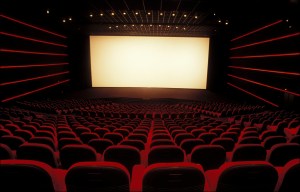Now is an excellent time to be an Avatar: The Last Airbender fan — the series is on Netflix, a new live-action adaptation is in the works, and the second installment of author F.C. Yee and Michael Dante DiMartino’s prequel novel series, The Shadow of Kyoshi, was just released. Oddly, the fandom for this decade-old show ostensibly made for children has never been more active, yet it is splintered over the various sequels and spinoffs it has to work with. Thankfully, Yee knows exactly what fans want and what they need.
The Shadow of Kyoshi is the second of Yee’s novels set in the world of Avatar: The Last Airbender and The Legend of Korra. It picks up right where its predecessor, The Rise of Kyoshi, left off, tracing the life of the Avatar that came two lifetimes before Aang. In the first book, Yee excavated a real and compelling hero from the tidbits we learned about Kyoshi in other mediums. In this second installment, he just might make Kyoshi your favorite character in the entire franchise.
Videos by PopCulture.com

Unlike many fantasy sequels, The Shadow of Kyoshi does not waste a lot of time filling readers in on what happened in the first book. I’d argue that this is an advantage in this case, as this starved fandom needs every page of new material it can get its hands on. Yee excels at this kind of efficient storytelling, moving the plot along at an exciting pace without losing that reflective tone that brings characters in this world to life.
The Shadow of Kyoshi benefits a lot from the slow build in the first book, as its hero now has control — if not mastery — over all four elements. It’s nice to get right to this point since fans knew it would happen anyway. Plus, the book promises right from the start that Kyoshi has much bigger things to deal with than merely mastering some magical martial arts.
By now, fans have probably relived Aang’s journey multiple times, and many have done the same with Korra as well. This makes Kyoshi the third Avatar to get an in-depth treatment, creating some expectations and, potentially, some predictable beats for her story. Yee weaves through these traffic cones expertly. Kyoshi’s experiences — the trials she faces, the lessons she learns — are often vaguely familiar, but never carbon copies. They’re like two Sky Bison passing in the night.
In fact, Kyoshi’s story makes the most of its prequel status by adding depth to the versions that come after it, not through Easter eggs or character cameos, but by deepening the audience’s understanding of this world and the Avatar’s place in it. Through her eyes, fans learn more about the Avatar cycle, though intuitively, not as a hard magic system with rules.
In many ways, the story has its medium to thank for that. For so long, fans had marveled at how much Avatar: The Last Airbender accomplished as a children’s show when its scope was more like that of a fantasy epic. Yee’s books prove this point by taking the world into the medium where many people have always imagined it, and showing how fertile the ground is. While he organically adds new elements where they are needed, he also gets the chance to take some of the deep-cut information from comic books, references, and commentary tracks and introduce them to fans the way they like to learn — in the story.
Put together, this fleshed out world-building, and deepening understanding of the Avatar cycle make for some impressively subtle usage of the franchise’s elemental symbolism. Fans are used to Aang being gentle as a breeze, or Korra adapting to what life throws at her, yet it does not feel like a betrayal of their characters to have Kyoshi be hard, unyielding and — frankly — violent. It’s not just her green shirt that makes her this way; it is a lifetime of social, economic, and spiritual circumstances, many of which are out of her control.
That is not to say that Kyoshi books are not for children. Yee shows an incredible amount of faith in readers, whatever their age to take this journey up a gradual, almost imperceptible slope from a whimsical cartoon to a fully-realized fantasy world, with social, economic and religious forces all entangling into chaos that still holds to its Nickelodeon origins.
The Rise of Kyoshi and The Shadow of Kyoshi deserve to stand on their own, yet it is impossible not to compare them to the rest of this franchise, especially when recommending them to other fans. I will echo some of the chatter online to say that these two books felt like more authentic spinoffs to me than the Avatar: The Last Airbender comic books did. I also think it’s great to see this franchise exploring stories backward in its timeline as well as forwards — especially with all the monumental changes to the world-building made in The Legend of Korra.
With their second installment, the Kyoshi novels have now repeatedly accomplished the nearly impossible task of making a compelling story out of a prequel, where fans know roughly what will happen at the end. They have made it clear that Kyoshi can carry her own story as well as Aang and Korra ever could, without rushing straight to Chin the Conqueror or any other familiar tie-in. There are still plenty of mysteries to explore in the meantime, and personally, I hope that Kyoshi does live to the age of 230, as the in-world legends say so that Yee and DiMartino have room for dozens of more books in her lifetime.
Now is the perfect time for Avatar fans to pick up The Rise of Kyoshi and The Shadow of Kyoshi. The second installment was published on Tuesday, July 21, and is available wherever books are sold. At the same time, both installments have just been released in audiobook format — perfect for busy fans or younger readers. The Kyoshi novels are published by Amulet Books.









